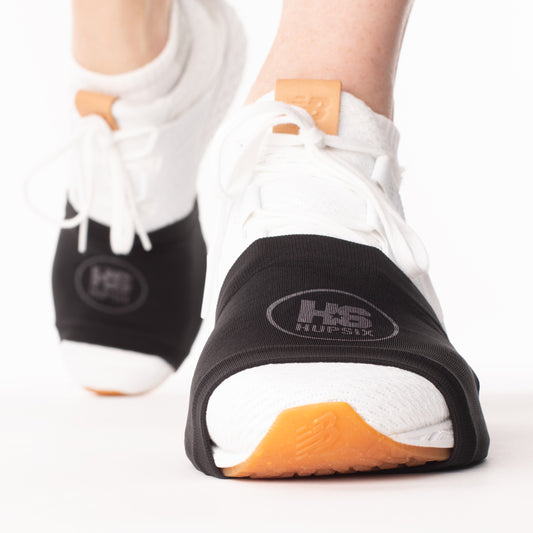
Is Yoga Enough Exercise? (Here’s the Truth)
Quick Answer:
Yoga is excellent for mobility, strength, and stress relief — but on its own, it usually doesn’t deliver the sustained cardio your heart needs. The CDC and American Heart Association recommend 150 minutes of moderate or 75 minutes of vigorous cardio per week. That’s the level where your heart actually adapts.
Yoga in America: The Myth vs. The Reality
Yoga has deep roots in Eastern philosophy, meditation, and breathwork. It wasn’t created as a fitness program. In the U.S., though, it’s been rebranded into boutique studios promising “zen” and sculpted bodies.
The irony? Many people end up stressed just trying to get to class. And once they’re there, they expect yoga alone to deliver the same health benefits as cardio — which it doesn’t.
That’s where active meditation comes in. Instead of trying to quiet the mind by sitting still, it can be more effective to move, sweat, and push your body. When you do, your mind naturally settles. That’s the gap cardio fills — and it’s why yoga works best as supplemental training, not the foundation of your fitness.
Yoga studios aren’t cheap either. Heated classes and boutique memberships cost real money. And if you’re paying those prices, you should ask: does it deliver the one thing science proves extends healthy living? If the answer is no, then yoga belongs in the supplemental column, not the foundation.
The same is true for other low-intensity methods. [Is Pilates Enough Exercise?] and [Is Barre Enough Exercise?] both show why you still need sustained cardio.
Why Cardio Comes First
Dr. Kenneth H. Cooper, the “Father of Aerobics,” showed back in 1968 what more than 50 years of research has confirmed: cardio is non-negotiable. Through the Cooper Institute, he has studied over 115,000 people — the largest and longest-running fitness study in the world.
Research from the Cooper Institute found that consistent aerobic training is linked to nearly a decade more healthy living.
Sustained, heart-pumping exercise doesn’t just make you fit. It:
- Lowers inflammation
- Boosts mood and energy
- Improves mental health and stress management
- Supports circulation and recovery
No amount of stretching or slow strength work can touch that.
What Mayo Clinic and Harvard Actually Mean
If you search “yoga and heart health,” you’ll see Mayo Clinic and Harvard Health saying yoga is “good for your heart.” True — but not in the way many assume.
-
Mayo Clinic: Yoga helps reduce stress, lower blood pressure, and support relaxation. That’s heart health through stress management — not through aerobic conditioning.
- Harvard Health: Yoga improves flexibility, posture, and calms the nervous system. But they also make it clear — if you want endurance and longevity, you still need cardio.
So yes, yoga has benefits. But they’re indirect — lowering stress and tension — not the same as the adaptations you get from cardio training.
Does Yoga Count as Cardio?
Sometimes, but not for long enough.
-
Gentle / restorative classes: Great for mobility and stress relief, but heart rates stay far below aerobic zones.
-
Power yoga / Vinyasa flows: Can raise your heart rate during continuous sequences — but it’s usually intermittent. You spike, then stop, then hold. It doesn’t keep you in the aerobic zone for the 20+ minutes needed for cardiovascular adaptations.
- Hot yoga: Your heart rate rises because your body is fighting heat — not because you’re training the heart itself. That’s heat stress, not cardio training.
Bottom line: yoga alone doesn’t deliver the sustained moderate-to-vigorous intensity your heart and lungs require.
The Science of Cardio
Here’s what actually happens when you do real cardio (AHA guidelines):
-
Your heart strengthens: Pumps more blood per beat, becomes more efficient.
-
Your lungs expand: More oxygen delivered to muscles.
-
Your cells adapt: Mitochondria multiply, giving you more stamina.
-
Your blood vessels open up: Circulation improves, blood pressure drops.
-
Inflammation falls: Your body recovers faster.
- Your immune system improves: Better at detecting and fighting illness.
These changes don’t happen in a yoga class. They only come from sustained cardiovascular effort.
The Heart Health Gap
You can be flexible, lean, and strong from yoga — but still have an undertrained cardiovascular system.
In the U.S., heart disease remains the leading cause of death, affecting millions each year. Cardiovascular fitness is your body’s main defense — not flexibility alone.
Yoga and Cardio: Why You Need Both
Yoga is valuable. It improves mobility, balance, recovery, and stress control. But cardio is the foundation. It builds the endurance, circulation, and longevity benefits yoga cannot.
Together? They’re a great pairing. But cardio always comes first.
Why HupSix Fills the Gap
HupSix wasn’t built to be another fitness program. It started as an activity — something fun, social, and driven by music. We realized the best way to share it was through fitness, because today that’s how people move, connect, and challenge themselves. That’s why HupSix looks so different from anything else you’ve seen.
The surprise? The same workout that feels like play also delivers what the CDC recommends for heart health. Most first-time HupSix users log about 13 minutes moderate and 15 minutes vigorous. Since vigorous counts double, that’s the equivalent of 43 minutes of cardio in just 30 minutes.
It’s a fast-paced, full-body workout that improves the way you move — building agility, coordination, and reaction time as you go.
So don’t think of it as “doing your cardio.” Think of it as jumping into something that feels alive. The cardio benefits are just the bonus.
-
Fast-paced: 30 minutes of structured cardio in a learn → practice → execute format
-
Music-driven: Original rock keeps you locked in and engaged
- Full-body: Builds strength, agility, and reaction time — while your heart does the work
It’s treadmill-level cardio — without the treadmill.
Bottom Line
Yoga is excellent — but it’s not enough. It lowers stress and supports mobility, but it doesn’t deliver the sustained cardio that science proves is the foundation of health and longevity.
Do both, but never confuse the two.
What to Do Next
You don’t have to commit without trying it. HupSix comes with a 30-day full refund policy and a 12-month prorated return.
Need help? We offer 1-on-1 coaching. Send us a video of your workout, and we’ll give you personalized feedback.
[Learn more or get the gear]


